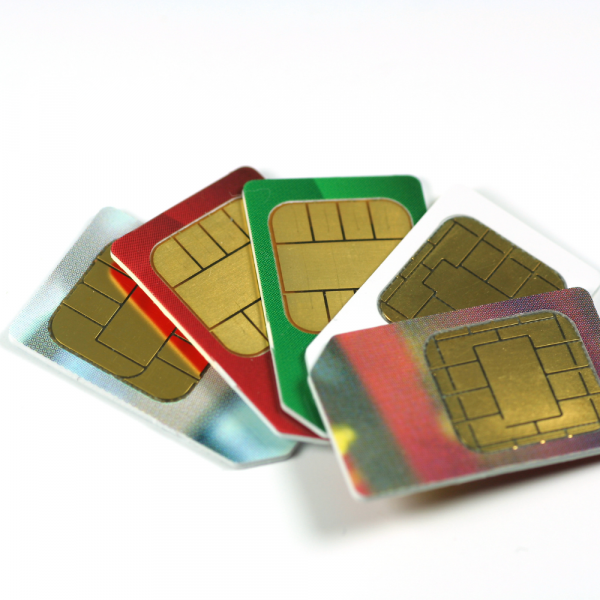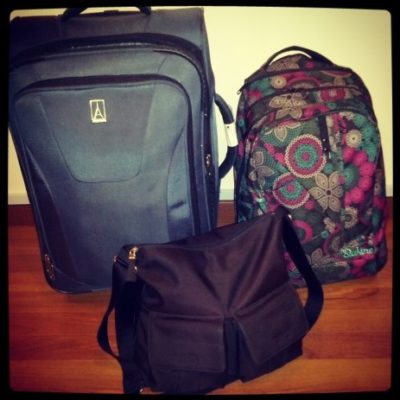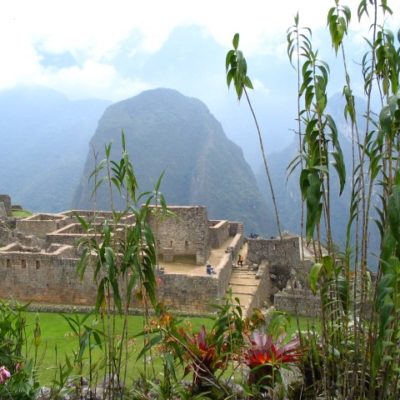
Buying Local SIM Cards When You Travel
September 23, 2014 | Nomad Life, Technology
For those of us who work online (or just like to stay connected), the search for good Wi-Fi is a constant companion on our travels. I always recommend having back-up Internet options in case the Wi-Fi isn’t so great (or is nonexistent due to power outages, etc.).
For those times when you have a bad Wi-Fi connection while traveling, one of the best back-ups is connecting to data via a local SIM card (as long as you have decent cell reception, of course!).
If you travel internationally and stay in one country for a while, buying a local SIM card is worth the effort.
(Make sure you have an unlocked quad-band GSM phone, which ensures that you can easily swap out SIM cards and your phone will work on networks around the world.)
I’ve worked with coaching clients from locations all over the world, and when the Wi-Fi isn’t good enough for a Skype call, I’ll often turn on data on my phone, log in to the Skype app, and connect with clients that way. (In my experience, an audio-only Skype call uses about 25 MB of data.)
Someone in the Nomadtopia Community on Facebook recently shared a great blog post that outlined a couple’s experiences buying SIM cards for international travel. There’s tons of great info in that post, so be sure to check it out!
I thought I would add to that post by sharing my own experiences buying local SIM cards abroad, because I’ve traveled to some countries they didn’t cover, or in the same countries my experience was different.
Note: Cell phone and SIM card plans, offers, and prices change frequently! This information reflects my experience at a particular point in time, but things might have changed since then.
In my experience, cell/data service tends to be quite cheap outside of North America. While I didn’t always keep great notes on the specific prices of plans I used, I don’t think I spent more than US$10/month on data/texts/calls in any of the countries listed here except the U.S./Canada.
In the countries listed here, I was able to top up my account with one or more of the following options:
- purchasing a prepaid refill card at a shop/kiosk and then calling into an automated system to complete the refill,
- doing an electronic top-up at a shop: they entered my phone number and the amount of credit I wanted and I’d receive a text message verifying the credit was added to my account, or
- recharging with a credit card online or on the phone (I probably only used this last option in the U.S., even if it was available in other places).
United States
I’m American, which I believe makes getting a SIM card in the U.S. a little easier, because I have a U.S. mailing address and credit card.
But because I don’t live in the U.S., I don’t have a regular plan there, so I use a prepaid SIM card when traveling in the United States just like anyone else.
From 2008 to 2012 I used a cheapo prepaid phone from Virgin Mobile, and I kept enough money on it so I could keep the same number and use it every time I went back to the States.
In 2012, I bought an unlocked Galaxy Nexus smartphone (directly from Google) and got a SIM card for AT&T’s GoPhone service for US$10. Since then, depending on how long I was staying, I’ve done either strictly pay-as-you-go, for roughly 10 cents a minute, or gotten a monthly no-contract plan that includes some amount of minutes, texts, and data.
In 2014, I came back to the States and discovered that because I hadn’t added credit to my SIM/account in more than six months, I’d lost my number, so I had to get a new SIM card (at AT&T again).
This time, because I knew I’d be in the States several times in the coming year, I put $100 on the card, which guarantees a full year of service.
Canada
My U.S. AT&T GoPhone plan included roaming in Canada, so if I remember correctly, in 2012 and 2013 I used that for text messages in Vancouver and surrounding areas without any problems.
But beware of data usage while roaming! In 2013, on a road trip to the Okanagan Valley, we turned the data on briefly because the GPS had gotten disconnected, and blew through about US$18 of credit in just a few minutes.
(This is an important note: In my experience, you can use GPS without data by simply getting it started while you have Wi-Fi access. Plug in your destination and let the GPS do its magic via Wi-Fi, and once it knows the route, it will keep following it even once you’re out of Wi-Fi range, as long as you don’t mess with the phone and end up disrupting the GPS! I think Roberto was trying to take a picture while I was driving, and then we noticed that the GPS had lost its way.)
Malaysia
We arrived in Kuala Lumpur in August 2013, and I bought a SIM card from U Mobile at one of the big electronics malls (I think it was either Plaza Imbi or Plaza Low Yat). Buying a SIM card in Kuala Lumpur was easy; the guy spoke decent English and they had some documentation in English as well, which helped him explain the plans to me. I just had to show him my passport and then pay for the SIM card and initial credit. I can’t find the price in my notes, but I’m pretty sure it wasn’t more than US$10.
I can’t remember how I topped up the SIM card in Malaysia, honestly. The service worked fine all over Malaysia, and we may have used it in Singapore, too. I remember that the notification text messages were in Malay so I sometimes had to get someone to translate for me.
Indonesia
In November 2013, I bought a SIM card for Indonesia from simPATI/Telkomsel at an electronics store at the airport in Jakarta. I had a bit of a tough time communicating with the girl who worked in the shop, but in the end it was a straightforward purchase (no ID or anything required); I paid 65,000 Rupiah (less than US$6) for the SIM and initial credit.
I used this one a lot, because the Wi-Fi in Bali wasn’t that great where we were staying (a common complaint in Bali, unfortunately!). I usually did an electronic top-up at a shop when I needed more credit.
India
I bought a SIM card for India while we were in Udaipur for several weeks in January 2014. I decided I didn’t want the guy at the local kiosk to take my passport and go get the card for me, so Roberto and I took a tuk-tuk to the customer service office for Airtel, which an Indian friend had recommended.
It was a more involved process and they asked for more documentation than in Malaysia, including a business card from the place we were staying and a copy of my passport and visa, and I had to fill out a couple forms, but it didn’t take very long and they set me up with a SIM card and some initial credit for calls/texts/data for 555 rupees (about US$9).
I did electronic top-ups at kiosks, and the service worked well everywhere we went in India.
Thailand
We spent a couple months in Chiang Mai in March and April of 2014. A friend had recommended DTAC for cell service, so I went to their shop at the Kad Suan Kaew Shopping Centre. As in India and Malaysia, buying a SIM card in Chiang Mai was easy; the person spoke decent English, and explained the plans and got me set up with a SIM card and some initial credit for calls/texts/data for 269 baht (about US$8).
DTAC has English documentation on their website and in the automated phone system, so I was able to buy refill cards at 7-Eleven and then activate the credit on my phone, or do an electronic top-up. The service worked well in southern Thailand too.
Argentina
Roberto and I both had local SIM cards that we’d been using for years. When I first moved to Buenos Aires in 2007, I bought a super-basic phone and a Movistar SIM (which took a little bit of paperwork but wasn’t too complicated) and have been using it ever since—until this year.
When we got back in June 2014 after being gone for a year, my SIM didn’t work anymore, but Roberto’s worked just fine. We decided we didn’t really need two anyway, so we’re just using his in my phone. We spend just a couple dollars a month for calls/texts (we don’t use it very much!) and don’t have a data plan, but we can activate data when we need it; 15 MB is less than 3 pesos (US$0.25).
Linked to the My Global Life Link-Up at SmallPlanetStudio.com.
Get the Top 10 Logistical Things You Need to do before becoming a nomad
(That Aren't What You Think)
When you download the guide, you’ll also be subscribed to the Nomadtopia newsletter. Your email is safe with me and you can unsubscribe anytime. View our Privacy Policy.




